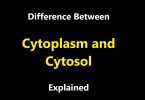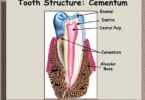In a cell, the nucleus is the control center and this is where the complex processes take place. It contains DNA which is made up of thousands of genes. When it is surrounded by histone proteins, it is called chromatin.
The Difference between Chromosomes and Chromatin is that chromatin is the lower organization of the genetic structure while chromosomes are the higher level of organization since they are more condensed.
Chromatin: Definition and Functions.
Chromatin is the structure that is formed when DNA strands are packaged by complex proteins called histones. This structure is condensed further to form the chromosomes. Chromatin is made up of many nucleosomes.
These are the structures formed by the combination of DNA and histones. Single chromatin fiber is 10 nm in diameter. These fibers are long, thin and uncoiled. Chromatin stays like this in the nucleus until it is time for cell division. There are no pairs of chromatin, as opposed to chromosomes. The chromatic fibers exist singly.
Chromatin can only be seen under the electron microscope. Its appearance is termed as ‘beads on string appearance’ which DNA being the string and histones being the beads. Chromatin is present in the whole cell cycle process. It contains chromatin and heterochromatin.
Euchromatin is the open conformation while heterochromatin is the compact conformation. These conformations are regulated through different stages of the cell cycle.
Chromosomes: Definition and Functions.
When it is time for cell division in the body, chromatin condenses to form chromosomes. The chromosomes number in any individual is an indication of the genetic content. For example, humans have a total of 46 chromosomes, arranged in 23 pairs.
One of these is the sex chromosome pair while others are the somatic chromosomes. Chromosomes are compact structures that are made up of nucleic acid and proteins. They are found in most living organisms and are responsible for carrying genetic information. This information is present on the chromosomes in the form of genes.
Chromatin has to condense highly in order to for chromosomes. These are condensed structures in which DNA could have coiled on itself up to 10,000 times. Chromosomes appear ribbed like and are compact in structure. They can be seen during cell division. While chromatin fibers are single in nature, chromosomes are paired.
The other member of the pair is called the sister chromosomes. Chromosomes can have different shapes, depending on the position of the centromere. The centromere is the central point of a chromosome and different proteins are present here. Chromosomes can be seen under the light microscope, during cell division.
Summary of Difference Between Chromosomes and Chromatin:
- The Difference between Chromosomes and Chromatin is that chromatin is not condensed while chromosomes are highly condensed.
- Another Difference between Chromosomes and Chromatin is that chromatin is present all through the cell cycle which chromosomes are seen during anaphase and metaphase stages of the cell cycle.
- While chromosomes are visible under the light microscope, chromatin can be seen only under the electron microscope.
- Chromosomes are present in pairs while chromatin fibers exist single.
- A Difference between Chromosomes and Chromatin is that chromatin contains euchromatin and heterochromatin both while chromosomes are predominantly heterochromatin.







Leave a Comment
You must be logged in to post a comment.